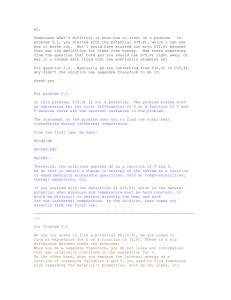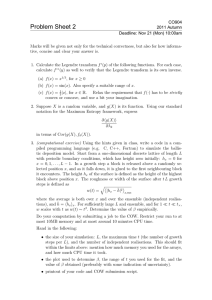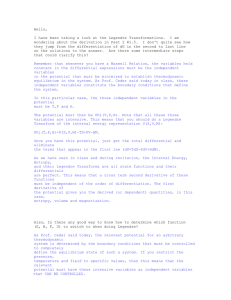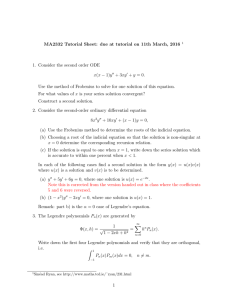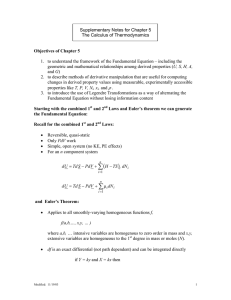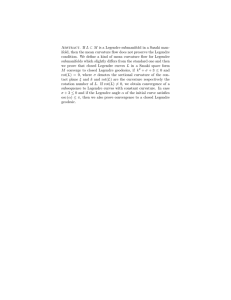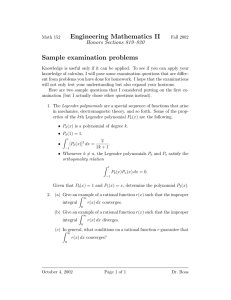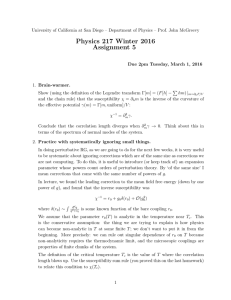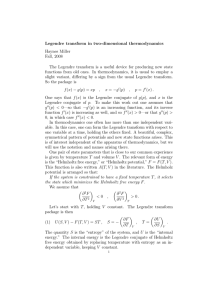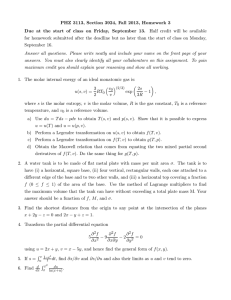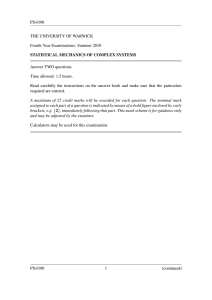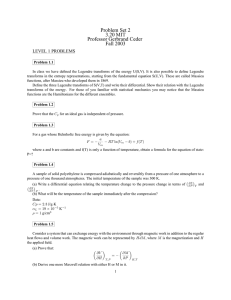Legendre transform
advertisement
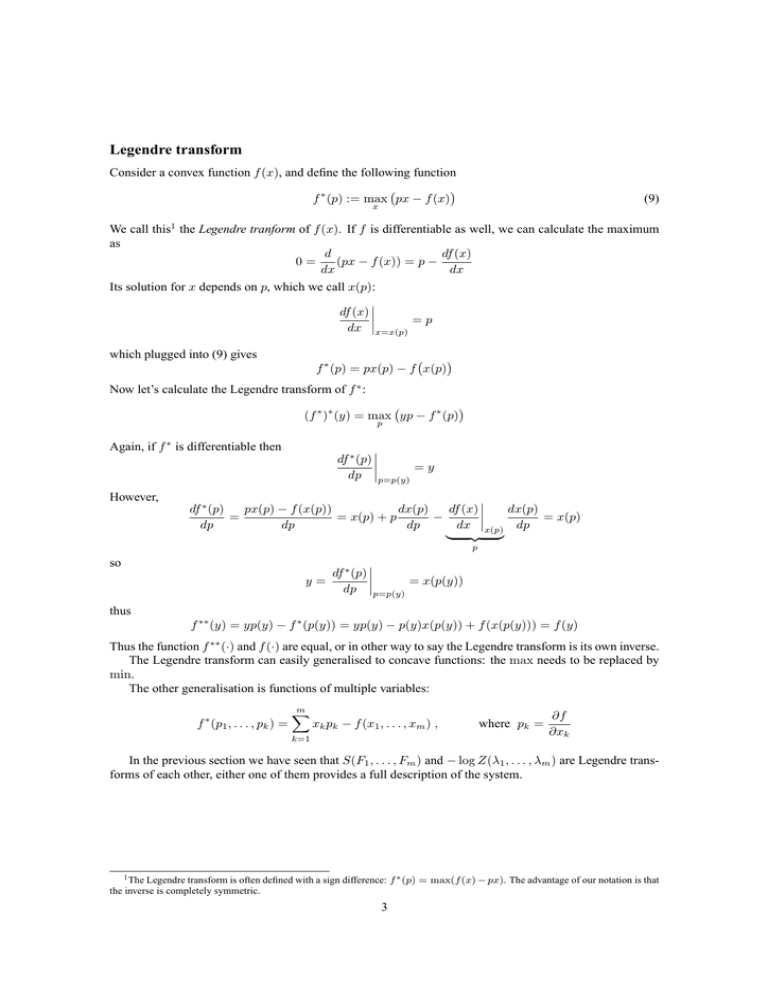
Legendre transform
Consider a convex function f (x), and define the following function
f ∗ (p) := max px − f (x)
(9)
x
We call this1 the Legendre tranform of f (x). If f is differentiable as well, we can calculate the maximum
as
d
df (x)
0=
(px − f (x)) = p −
dx
dx
Its solution for x depends on p, which we call x(p):
df (x) =p
dx x=x(p)
which plugged into (9) gives
f ∗ (p) = px(p) − f x(p)
Now let’s calculate the Legendre transform of f ∗ :
(f ∗ )∗ (y) = max yp − f ∗ (p)
p
Again, if f ∗ is differentiable then
However,
df ∗ (p) =y
dp p=p(y)
df ∗ (p)
px(p) − f (x(p))
dx(p)
df (x) dx(p)
=
= x(p) + p
−
= x(p)
dp
dp
dp
dx x(p) dp
| {z }
p
so
y=
df ∗ (p) = x(p(y))
dp p=p(y)
thus
f ∗∗ (y) = yp(y) − f ∗ (p(y)) = yp(y) − p(y)x(p(y)) + f (x(p(y))) = f (y)
Thus the function f ∗∗ (·) and f (·) are equal, or in other way to say the Legendre transform is its own inverse.
The Legendre transform can easily generalised to concave functions: the max needs to be replaced by
min.
The other generalisation is functions of multiple variables:
f ∗ (p1 , . . . , pk ) =
m
X
xk pk − f (x1 , . . . , xm ) ,
k=1
where pk =
∂f
∂xk
In the previous section we have seen that S(F1 , . . . , Fm ) and − log Z(λ1 , . . . , λm ) are Legendre transforms of each other, either one of them provides a full description of the system.
1 The Legendre transform is often defined with a sign difference: f ∗ (p) = max(f (x) − px). The advantage of our notation is that
the inverse is completely symmetric.
3
